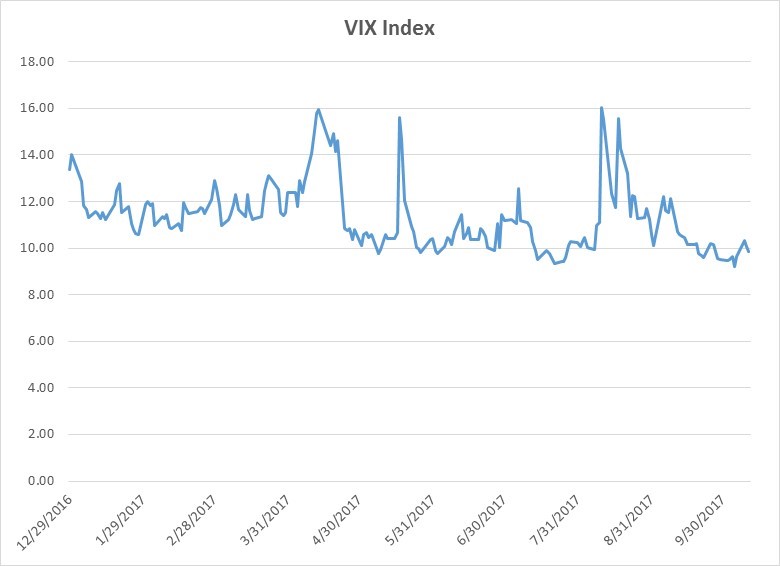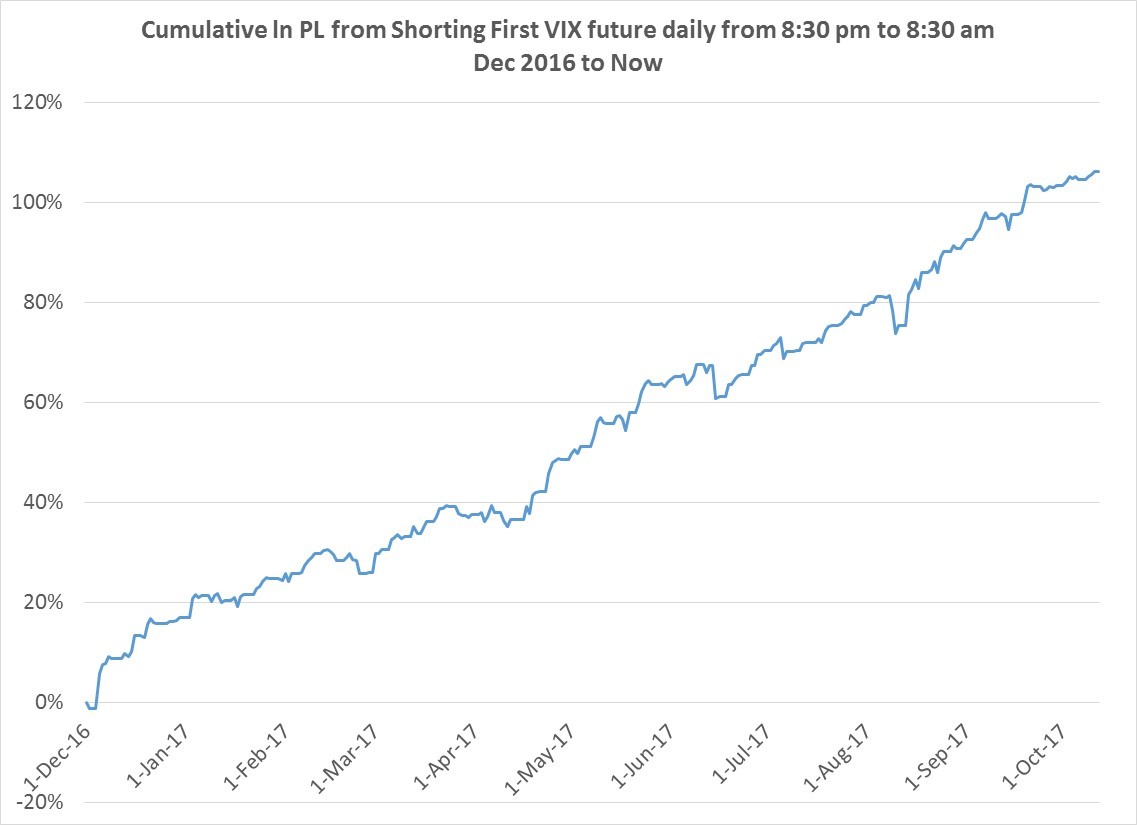One of the odder facets of capital markets in the last few years has been the shockingly low level of volatility, both realized and implied, especially in equity markets. Coincident with this decline in the level of volatility has been the emergence of two parallel developments.
Huge swathes of money, especially in equities, are now allocated completely mechanically on the basis of level of the VIX or historical realized volatility, whether in guaranteed annuities or risk parity portfolios. As a tactical strategy, this backtests well: if you cut your equity risk when vol rises, and vice-versa, you end up with decent returns, especially around crises. The problem is that everyone knows this now, and it’s a crowded trade. At some point in the future, some large and unexpected spike in volatility will cause these portfolios to liquidate equities en masse in a “portfolio insurance” herding a la the 1987 crash. And then someone will scapegoat the quants who developed and used these asset allocation models.
Second, volatility has now emerged as an asset class in its own right, with liquid securities from ETFs to VIX futures offering traders a path to express their view on the future direction of vol itself. Whether or not implied volatility in equities should be viewed as an asset class in itself is pretty dubious, given its high negative correlation to equities: if you are long stocks and short vol, you have increased the risk in your portfolio. Nevertheless, this is a radical change from even fifiteen years ago when someone who wanted to express a view on US equity vol had to buy or sell a straddle or strangle and every day manage the delta of her position. By comparison, it’s a cleaner, cheaper and simpler world today if you are a vol trader: just buy or sell a VIX future…done.
Shown below is the VIX Index since Dec 2016. Vol has moved downward in a random scary pattern from 14 to 10. Being short vol for this whole time was a successful, albeit painful & noisy trade.

To be clear, you can’t trade the VIX itself, only ETFs derived from it or VIX futures, which are probably the cheapest way to get equity vol exposure. The VIX futures curve is “typically” upward sloping as you move out the curve with contracts farther from expiry trading at higher prices. Over time this means that there is a roll-down effect from the natural term-structure: a contract that starts off at a price of say 15 three months from expiry will “roll down” closer to 12 as it approaches expiration, and the contract trading closest to expiry will converge downward towards the cash VIX Index itself. So there is a natural tendency for VIX contracts to fall or lose value over time in a stable or normal market environment. The VIX futures curve can invert and do lots of contortions in a market crisis, but that is another blog post.
Let’s say you were looking for a more consistent way to trade both the decline in the VIX over the last year and capture the tendency of VIX futures to decline over time. You could simply buy farther dated VIX futures and hold them until expiry, but this would give you a pretty bumpy ride.
Maybe you were looking for a more consistent and less risky way to make money being short vol over this time? So you investigated day trading VIX futures. If you were observant you would have noticed the following.
If you shorted the first VIX future every day from 8:30 am to 8:30 PM, ignoring transaction costs, you would do OK PL-wise, but its still a noisy path.

And if you did the complete opposite, and decided to short the first VIX future every night at 8:30 PM and cover your short at 8:30 am before the chaos of US economic announcements hits your position, again ignoring transaction costs. Well that works much better.

Why is this occurring? I don’t know, some of it is attributable to a bull market, but its strikingly persistent and weird pattern/anomaly. And it really doesn’t make much sense that the decline in Vol would happen in such a consistent part of the day, but there it is. The contrast between the random noise of the intraday vol down move vs the overnight decline is quite stunning. How long it will continue is anyone’s guess.